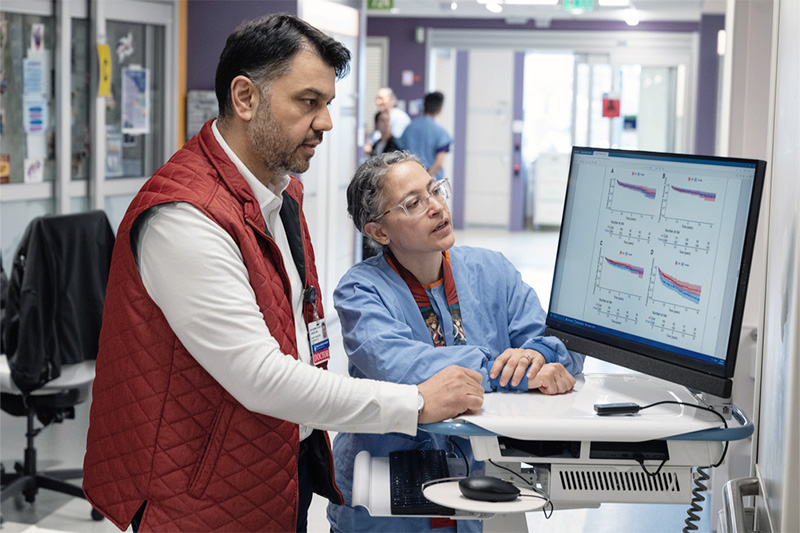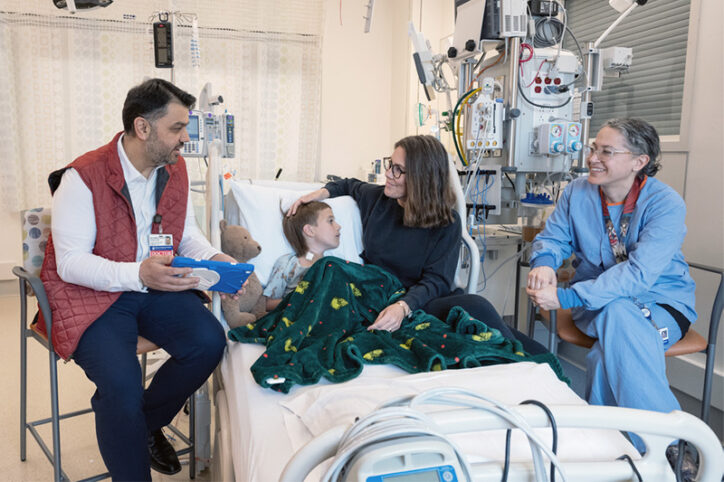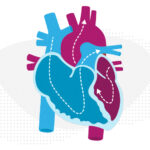Past patient outcomes could help single-ventricle surgery decisions

When considering whether a child who has a single-ventricle heart defect would benefit more from biventricular repair or the Fontan procedure, heart specialists have lacked a key tool to guide them: data that shows possible long-term health risks of each surgical option.
But Boston Children’s heart specialists — who perform biventricular repair more often than any other pediatric hospital — believe they finally have the answer in new research that looks at more than 10 years’ worth of patient outcomes for the two procedures.
Key takeaways
- A study comparing 10 years’ worth of outcomes for 516 single-ventricle patients found that the majority of patients experienced no adverse health events after having either the Fontan procedure or biventricular repair.
- Neither procedure caused more adverse outcomes than the other, but the onset of liver disease was found more in Fontan patients.
- Heart specialists hope the detailed study can help inform decisions on which surgery patients should have.
Comparing the outcomes of 258 patients for each procedure, the data showed that the number of adverse postoperative events (including arrythmia, stroke, or the need for a heart transplant) largely didn’t differ between the two surgeries. But the data did confirm what specialists have long believed: There is a lower risk of liver disease for children who have biventricular repair.
“It is not the only factor for us recommending biventricular repair, but it is something we point out to families, that there could be a problem with the liver 10 years or later after Fontan surgery,” says critical care cardiologist Muhammad Bakr Ghbeis, MD, the primary author of the study.
Two surgeries help single-ventricle patients
Developed in the 1960s, the Fontan procedure improves circulation and preserves the one functioning ventricle by lessening its workload: deoxygenated blood bypasses the heart and is rerouted to the lungs.
But with two major upper-body veins surgically disconnected from the heart and deoxygenated blood now unable to enter a ventricle, blood pressure can build in the veins and affect the organs of some patients. Ghebis and other heart specialists have known about the venous buildup long before the new study could confirm it.
“It can make the liver struggle,” Ghbeis says. “All organs can be affected, including the kidneys, but impacts on liver functions — toxin clearance, protein production, metabolism — manifest earlier than others.”
Wanting to give children a chance to have two functioning ventricles, Boston Children’s cardiac surgeons had a key part, decades after the Fontan’s creation, in developing biventricular repair. As the last of a series of procedures, the surgery “grows” the smaller ventricle so that it can be involved in circulation, even in a limited role. That biventricular circulation usually diminishes hypertension in the veins.
But not every patient’s ventricle will grow; single-ventricle circulation that’s finalized by a Fontan procedure is the best option for them. Even though Ghbeis and colleagues knew the Fontan could present risks to the liver later in life, for the longest time they didn’t have the long-term data to compare complications from the procedures. But with Boston Children’s Complex Biventricular Repair Program somewhat recently passing its 20th anniversary, they finally had enough case histories to conduct a study.
Liver disease risk lower with biventricular repair
The new study compared the case histories of 516 patients, evenly split between those who had either biventricular repair or the Fontan procedure at Boston Children’s from 2007 to 2022, as published in the Journals of the American College of Cardiology.
The study recorded any major adverse cardiovascular events a patient had over a 10-year span. It found little statistical survival difference between the two groups, as well as when counting patients who experienced adverse events such as excessive protein loss, a rare bronchitis, an abnormal connection between the pulmonary artery and pulmonary veins, abnormal heart rhythm, the need for a tracheostomy, and heart transplant.
(Eighty-seven percent of the biventricular repair patients and 84 percent of Fontan patients experienced no adverse events.)
The only significant difference between the two procedures was patients who experienced the start of liver dysfunction: 29 percent of Fontan patients and 18 percent of biventricular repair patients. “Many who have the Fontan physiology tend to develop liver disease in adulthood,” Ghbeis says. “We usually see it in patients as early as their 20s.” There is no treatment for Fontan-associated liver disease, only managed care.

Making the best surgical decisions for children
The study also showed that patients who were diagnosed with endocardial fibroelastosis (thickening of the heart chambers’ lining) before biventricular repair had a lower survival rate.
What’s next?
The heart specialists hope to continue studying long-term outcomes of the Fontan procedure and biventricular repair to see which adverse outcomes surface beyond the 10-year post-surgery period. Two other ongoing studies also look at biventricular repair: the neurological and functional capacity of children after the surgery, and a review of improving care right after the procedure.
But the program has made tremendous strides identifying those at-risk patients, says three other of the study’s authors, cardiac surgeon Sitaram Emani, MD, and cardiologists Rebecca Beroukhim, MD, and John Kheir, MD. Some of those children’s small ventricles can’t ever be fully developed but they still have potential to help in circulation, so the patients are considered for one of two relatively new surgeries: the reverse 1.5 ventricular repair or the “reverse” double-switch 1.5 ventricle repair.
That and many other considerations during the preoperative stage help Boston Children’s heart specialists make informed decisions on which procedure will best suit a single-ventricle patient across a lifetime, Emani says. The new study will be yet another tool the specialists can use to help families decide whether their child should have the Fontan or biventricular repair.
“When we talk to families, it all comes down to how we can improve the long-term health of their child,” Emani says. “We want to make sure they have a high quality of life.”
Learn more about the Single Ventricle Program and the Complex Biventricular Repair Program.
Related Posts :
-

It's all in the PV loops: New analytical model could improve circulation assessments before heart surgery
The double-switch operation corrects the congenital reversal of the heart’s ventricles and its two main arteries. It’...
-

Conduction tissue mapping is shown to significantly reduce heart block
New research by Boston Children’s validates an innovative approach to mapping the heart’s invisible conduction tissue during surgery. ...
-

Injected microbubbles could be a safe way to deliver emergency oxygen
For years, researchers and clinicians have been trying to find a way to rapidly deliver oxygen to patients when traditional ...
-

Finding a possible genetic treatment for rare arrhythmias
Variants in a gene that plays a key role in heart function can cause potentially life-threatening arrhythmia syndromes known as ...





